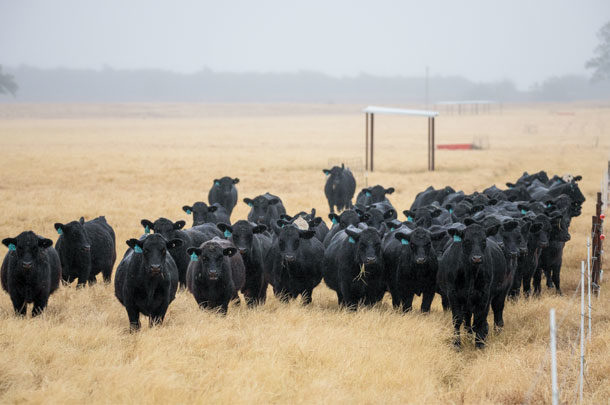The greatest percentage of a cow’s annual maintenance cost is almost always allocated toward her feed bill, which can include supplement, mineral and hay.
The vast majority of these costs are accrued during winter, when most forages are dormant and low in quality. Winter is also a time of increasing nutrient requirements, either due to increasing fetal growth for a spring-calving cow or due to lactation requirements for a fall-calving cow.
Regardless of calving season, keeping your herd conditioned through the dormant season is critical for a healthy calf, optimal lactation to promote calf growth and for timely breedback, but maintaining that condition shouldn’t require breaking the bank.
There are several management strategies that can help reduce feed cost, but one of the simplest ways is to take advantage of what’s already available to you by stockpiling the forage in your pastures.
What is stockpiling forage?
Stockpiling forage is a great way to reduce feed costs by extending grazing into winter. In some cases, stockpiling even promotes plant succession and overall grazing land health.
Stockpiling requires you to identify pastures to be utilized for winter grazing and then manage your grazing early in the year to allow those pastures to rest during the growing season. Forage tonnage produced during the growing season is allowed to go dormant to be used as “standing hay” – preserved, dried forage that doesn’t have to be baled, stored and brought back to the pasture months later.
Forage quality after frost
 Contrary to popular belief, perennial forages (both native and introduced) will maintain their nutritional quality for weeks or months after first frost, preserving the feedstuff for use well into winter. Photo by Mike Dixon.
Contrary to popular belief, perennial forages (both native and introduced) will maintain their nutritional quality for weeks or months after first frost, preserving the feedstuff for use well into winter. Photo by Mike Dixon.A common misconception is: Forage in the pasture will lose its value after frost, leading to producers trying to take advantage of the quality before frost initiates dormancy. This can result in overgrazing late in the growing season, which is particularly detrimental to native species that are more susceptible to overutilization. Contrary to popular belief, perennial forages (both native and introduced) will maintain their nutritional quality for weeks or months after first frost, preserving the feedstuff for use well into winter.
Native grasses are more frost-resilient
Native grasses are generally much more frost-resilient compared to introduced varieties. Some of this resiliency can be attributed to the physical structure of the plant. Native grasses like bluestems, gramas, switchgrass and others are tall and erect in stature, protecting them from degradation during a wet winter. In contrast, bermudagrass tends to be more fragile in structure and is more susceptible to winter elements and to both nutritional and physical decline.
Generally speaking, first frost will “freeze” the nutrient value of bermudagrass until the middle of December, when both nutrition and palatability decline past the point of being an effective feed source. Native pasture will hold the majority of its nutritional value for a longer amount of time, often far into January, though weather events like an early freeze or a particularly wet winter can significantly shorten the grazing season for stockpiled forages of any species.
How to improve stockpile quality
It is important to note, the protein content of stockpiled forages remains much steadier through the dormant season compared to energy content, which will slowly decline through the winter.
One way to help elevate the nutrient content of stockpiled pastures and to extend the quality of declining nutrition is to promote fresh growth before dormancy so that younger, more nutritionally dense leaf material enters into the dormant season. This promotion of new growth can be done through controlled burning or grazing.
For example, grazing a bermudagass pasture in August and then allowing it to rest and recover will result in young, new growth that has similar nutrient value to spring green-up. This means higher-quality forage is preserved for early winter grazing compared to older, more mature plants that nutritionally peaked months ago.
Native pastures require more recovery time and should be last grazed lightly (or burned) in June or early July to allow for adequate regrowth and deposition of nutrients for next year’s growth. This newer growth means greater nutrient quality for your cows further into winter, resulting in lower feed costs.
Make your plan to stockpile
Stockpiled forage can be higher-quality than the majority of available hay and requires no equipment or fuel to harvest, store and deliver as feed. It only requires making a plan and intentionally managing your available forage to you and to your cows’ advantage. Do the best with what you have available and only then seek outside resources to meet any known nutrient deficiencies.
With the use of stockpiled forages, hopefully you can satisfy cow nutrient requirements longer into winter and subsequently use less hay and feed to better satisfy your bottom line.











